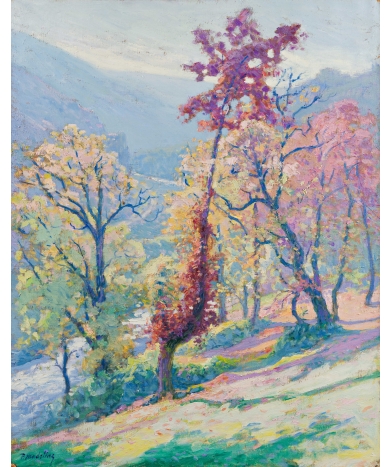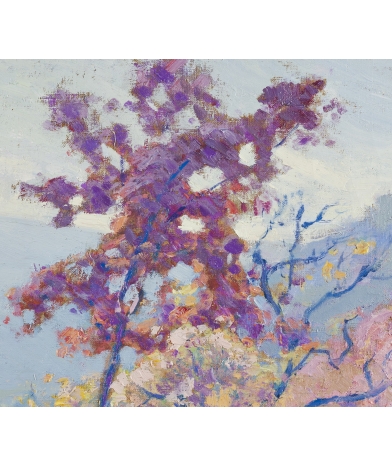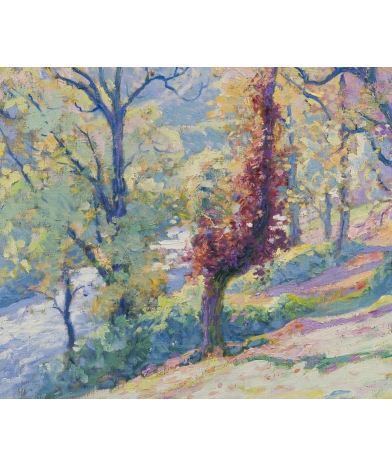Paul Madeline (1863-1920) - Spring in Creuse
Dimensions : H. 81 cm x W. 65 cm (with frame: H. 102 cm x W. 86 cm)
Born in 1863, Paul Madeline studied at the École des Beaux-Arts in Paris. In 1894, this painter, guided by the prevailing impressionism, was captivated by the beauty of the Creuse landscapes, where he spent several months each year. He was one of the leading figures of the Crozant school, whose leader was Armand Guillaumin. He died at the age of 56, leaving a small but high-quality body of work.
He exhibited at the Salon des artistes français in 1894, 1897 and 1899, and became a permanent member of the Salons d'Automne and the Nationale des Beaux-Arts. At the turn of the century, his success grew and he met Raffaëlli, Lebasque, Maurice Chabas, Aman Jean... the great painters of the time, with whom he founded "La Société Moderne" in 1908. The famous Devambez and Durand-Ruel galleries were also invited. From 1910 onwards, he introduced figures into his compositions of Brittany and the South of France.
Madeline's touch and palette are close to those of Armand Guillaumin. Madeline's world is delicate and subtle, and some of his works are close to those of Henri Martin. Paul Madeline's paintings have a remarkable light, and his own distinctive tones of green and violet. He stands on the border between Impressionism and Post-Impressionism. The Salon des Indépendants devoted a major retrospective to him in 1926. Many of his works are held in major museums: Paris (Musée d'Orsay), Châteauroux, Guéret, Musées des beaux-arts de Rouen, de Limoges, de Nantes, de Nice, de Pau, Hôtel de ville de Rouen, etc...
This large-format painting depicts Madeline's emblematic subject, the Creuse. It is a work of the highest quality, produced around 1900, and comparable in composition and color to Madeline's painting in the Musée d'Orsay. It is important to observe the details of this oil painting to understand the power and variety of the colors; Madeline's work here is very well thought-out and accomplished.
The painting is on its original canvas and in exceptional condition: we found it in its original frame, protected by glass since its creation. The freshness of this Impressionist painting is extremely rare. The beautiful Louis XV-style frame, in carved wood, has been restored.






